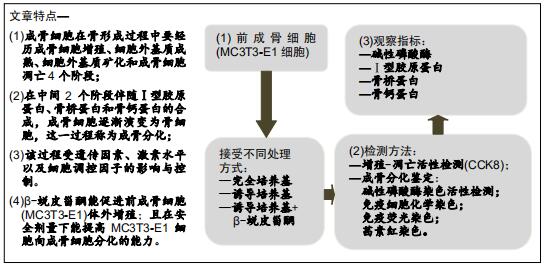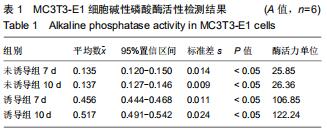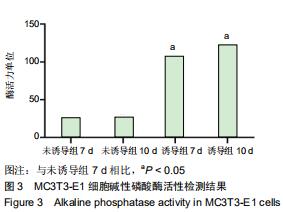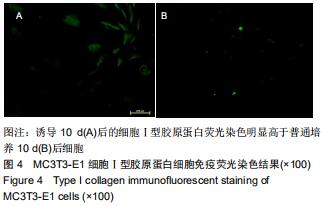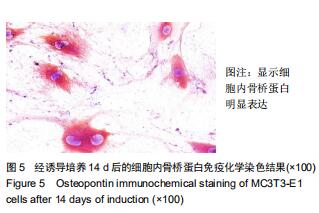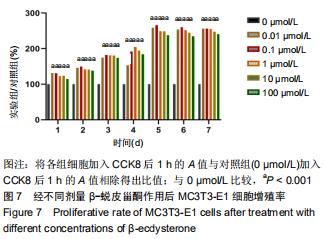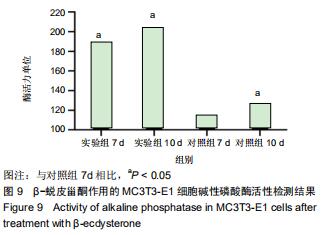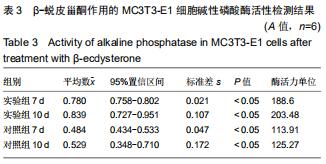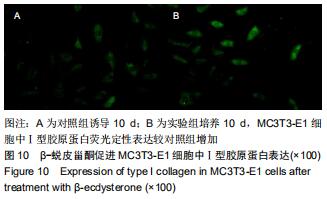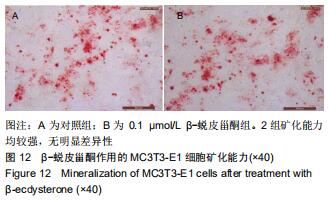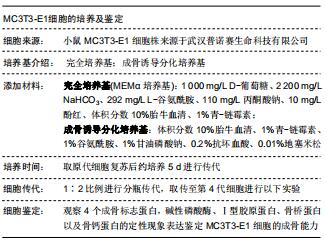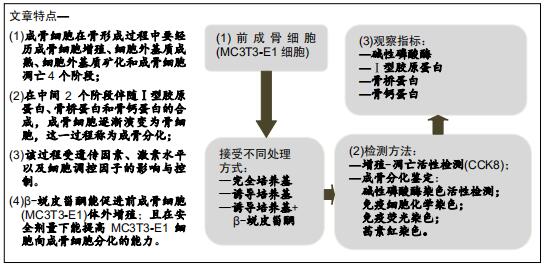|
[1] POSA F, DI BENEDETOO A, CAVALCANTI-ADAM EA, et al. Vitamin D Promotes MSC Osteogenic Differentiation Stimulating Cell Adhesion and αVβ3 Expression.Stem Cells Int. 2018;2018: 6958713.
[2] YAO H, XUE J, WANG Q, et al. Glucosamine-modified polyethylene glycol hydrogel-mediated chondrogenic differentiation of human mesenchymal stem cells.Mat Sci Eng C-Mater.2017;79:661-670.
[3] KUSUMA S, GERECHT S. Derivation of endothelial cells and pericytes from human pluripotent stem cells.Methods Mol Biol. 2016;1307:213‐222.
[4] BERESFORD JN, BENNETT JH, DEVLIN C, et al. Evidence for an inverse relationship between the differentiation of adipocytic and osteogenic cells in rat marrow stromal cell cultures.J Cell Sci. 1992;102 (Pt 2):341-351.
[5] NUTTALL ME, GIMBLE JM. Is there a therapeutic opportunity to either prevent or treat osteopenic disorders by inhibiting marrow adipogenesis? Bone. 2000;27(2):177-184.
[6] NILSSON O, WEISE M, LANDMAN EB, et al. Evidence that estrogen hastens epiphyseal fusion and cessation of longitudinal bone growth by irreversibly depleting the number of resting zone progenitor cells in female rabbits.Endocrinology.2014;155(8): 2892- 2899.
[7] MANSON JE, HSIA J, JOHNSON KC, et al. Estrogen plus progestin and the risk of coronary heart disease. N Engl J Med. 2003;349: 523-534.
[8] KAPUR P, WUTTKE W, JARRY H, et al. Beneficial effects of beta-ED-Sysone on the joint, epiphyseal cartilage tissue and trabecular bone in ovariectomized rats. Phytomedicine. 2010; 17(5): 350-355.
[9] OTAKA T, OKUI S, UCHIYAMA M, et al. Stimulati on of protein synthesis in mouse liver by ecdysterone. Chem Pharm Bull.1969; 17(1): 75-81.
[10] OTAKA T, UCHIYAMA M. Stimulatory effect of ecdysterone on RNA synthesis in mouse liver. Chem Pharm Bull.1969;17(9): 1883-1888.
[11] YOSHIDA T, OTAKA T, UCHIYAMA M, et al. Eff ect of ecdysterone on hyperglycemia in expermental animals. Biochem Pharm. 1971; 20(12): 3263-3268.
[12] 松田弘幸,河场享子,山本幸生,他. Ecdysteroneの实验的家兔动脉硬化症におよぼす影响[J].日药理志,1974,70(3):325-339.
[13] TAKEI M, ENDO K, NISHIMOTO N, et al. Effect of ecdysterone on histamine release from rat peritoneal mast cells.J Pharm Sci. 1991;80( 4): 309-310.
[14] GAO L, CAI G, SHI X. Beta-ecdysterone induces osteogenic differentiation in mouse mesenchymal stem cells and relieves osteoporosis.Biol Pharm Bull. 2008;31(12):2245-2249.
[15] DAI WW, WANG LB, JIN GQ, et al. Beta-Ecdysone Protects Mouse Osteoblasts from Glucocorticoid-Induced Apoptosis In Vitro.Planta Med. 2017;83(11):888-894.
[16] TANG YH, YUE ZS, LI GS, et al. Effect of β‑ecdysterone on glucocorticoid‑induced apoptosis and autophagy in osteoblasts. Mol Med Rep. 2018;17(1):158-164.
[17] TANG YH, YUE ZS, XIN DW, et al. β‑Ecdysterone promotes autophagy and inhibits apoptosis in osteoporotic ratsMol Med Rep. 2018;17(1):1591-1598.
[18] ABIRAMASUNDARI G, MOHAN GOWDA CM, SREEPRIYA M. Selective Estrogen Receptor Modulator and prostimulatory effects of phytoestrogen β-ecdysone in Tinospora cordifolia on osteoblast cells.J Ayurveda Integr Med. 2018;9(3):161-168.
[19] ZHANG X, XU X, XU T, et al.β-Ecdysterone Suppresses Interleukin- 1β-Induced Apoptosis and Inflammation in Rat Chondrocytes via Inhibition of NF-κB Signaling Pathway.Drug Dev Res. 2014;75(3):195-201.
[20] KUNIMATSU R, GUNJI H, TSUKA Y, et al. Effects of high-frequency Near-infrared diode laser irradiation on the proliferation and migration of mouse calvarial osteoblasts.Lasers Med Sci.2018;33(5):959-966.
[21] GAL TJ, MUNOZ-ANTONIA T, MUR-CACHO CA, et al. Radiation effects on osteoblasts in vitro - a potential role in osteoradionecrosis. Arch Otolaryngol Head Neck Surg.2000; 126(9):1124-1128.
[22] 赵秀敏,艾红军,常新.成骨细胞和破骨细胞的传导通路和相关因子[J].中国实用口腔科杂志,2009,2(3):176-179.
[23] 李彬,张柳.RUNX2与骨代谢的调控[J].中国骨质疏松杂志,2009, 15(1):63-67.
[24] 徐成峰,胡大海,赵周婷,等.兔骨髓间充质干细胞体外分离培养及多向诱导分化[J].中国组织工程研究与临床康复,2010,14(6): 1002-1005.
[25] ZHANG L, HU Y, SUN,CY, et al. Lentiviral sh RNA silencing of BDNF inhibits in vivo multiple myeloma growth and angiogenesis via down-regulated stroma-derived VEGF expression in the bone marrow milieu.Cancer Sci.2010;101(5):1117-1124.
[26] 张贤,朱丽华,钱晓伟,等.杜仲醇提取物诱导骨髓间充质干细胞成骨分化中的Wnt信号途径[J].中国组织工程研究,2012,16(45): 8520-8523.
[27] ZHOU PR, LIU HJ, LIAO EY, et al. LRP5 polymorphisms and response to alendronate treatment in Chinese postmenopausal women with osteoporosis. Pharmacogenomics. 2014;15(6): 821-831.
[28] LIU TM, LEE EH. Transcriptional Regulatory Cascades in Runx2-Dependent Bone Development.Tissue Eng Part B Rev. 2013;19(3):254-263.
[29] JIAN CX, LIU XF, HU J, et al. 20-hydroxyecdysone-induced bone morphogenetic protein-2-dependent osteogenic differentiation through the ERK pathway in human periodontal ligament stem cell.Eur J Pharmacol. 2013;698(1-3):48-56.
[30] SEIDLOVA-WUTTKE D, CHRISTEL D, KAPUR P, et al. Beta-ecdysone has bone protective but no estrogenic effects in ovariectomized rats.Phytomedicine.2010;17: 884-889.
[31] KAPUR P, WUTTKE W, JARRY H, et al. Beneficial effects of beta-Ecdysone on the joint, epiphyseal cartilage tissue and trabecular bone in ovariectomized rats.Phytomedicine.2010; 17: 350-355.
|
